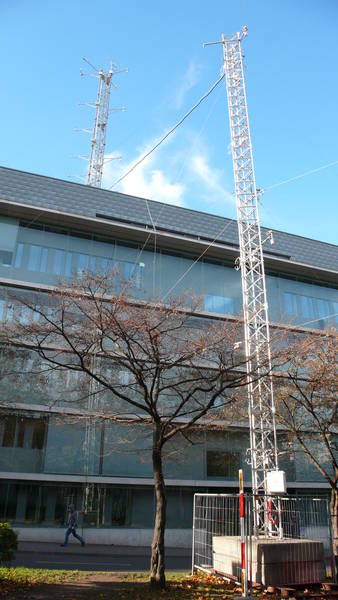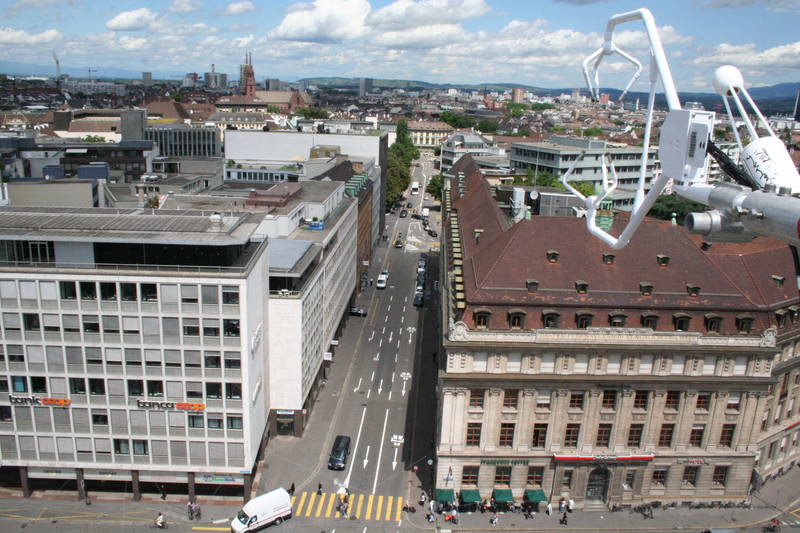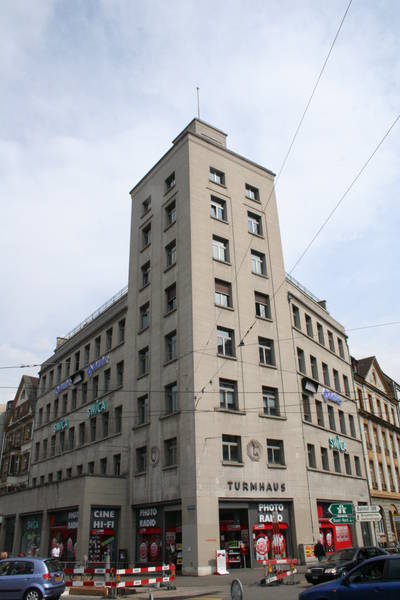|
|
|

The street canyon tower and the rooftop-tower.

View from the "Turmhaus" towards the city center.

Measurements take place on top of this building, the "Turmhaus".
|
LocalBRIDGE programWithin the scientific scope of BRIDGE, an additional set of urban micrometeorological measurements with a focus on CO2-fluxes is being carried out in the city of Basel, Switzerland:
Primary Investigator: Björn LietzkeBackground/Motivation - Why measuring CO2 in urban environments?Modeling the global carbon cycle:Quantifying the role of cities is a crucial part and not well known today:
Methodological uncertainties:Limitations of single-point measurements in complex urban environment. How accurate are they, what do they represent?Reliability of micrometeorological standard-methods in urban environments? Goal & QuestionsInvestigation of micro to local scale variability of CO2 concentrations and fluxes in a dense urban environment. 1. Comparison of two urban CO2-flux sites over more than one year. Where does the CO2 come from, on what factors do fluxes depend and to what extent? 2. Micro to local-scale CO2-exchange processes in and above a street canyon. How does local scale CO2 distribution develop in and above an urban street canyon? The road Klingelbergstrasse is part of the inner ring road around the city center of Basel, Switzerland. Especially during rush hours it is highly frequented by individual traffic and public transport buses. On a grass strip in the middle of the three-lane road a 19 m high street canyon tower has been installed for a one and a half year period from October 2009 to March 2011. On top of the building beneath, which has a height of approximately 20 m, a fix rooftop mast (39 m total height above street level) equipped with several meteorological instruments is continuously sampling data since January 2004. Two vertical CO2-concentration profiles were sampled, one in the center and one at a wall of the canyon using a closed-path gas analyzer. CO2 efflux from the street canyon was measured with an open path eddy-covariance system at the top of the canyon. A vertical profile of air temperature and humidity is measured at three different heights. Expected outputs are an enhanced knowledge about the spatial-temporal CO2 distribution within and above an urban street canyon in correlation with local traffic and heating patterns and comparisons with and verifications of local scale models (e.g. CFD). Local wind directions are assumed to play an important role in vertical CO2 exchange and in the distribution inside the canyon. The urban CO2 and energy flux measurements at Basel “Aeschenplatz” are carried out since June 2009. This station is thought to be a reference station for the long-term flux measurements at the Institute for Meteorology, Climatology and Remote Sensing (Basel Klingelbergstrasse, see above) located about 1.6 km away. CO2 flux and concentration data of this two stations will be compared and analyzed for their source areas. This site is part of the Urban Flux Network. |